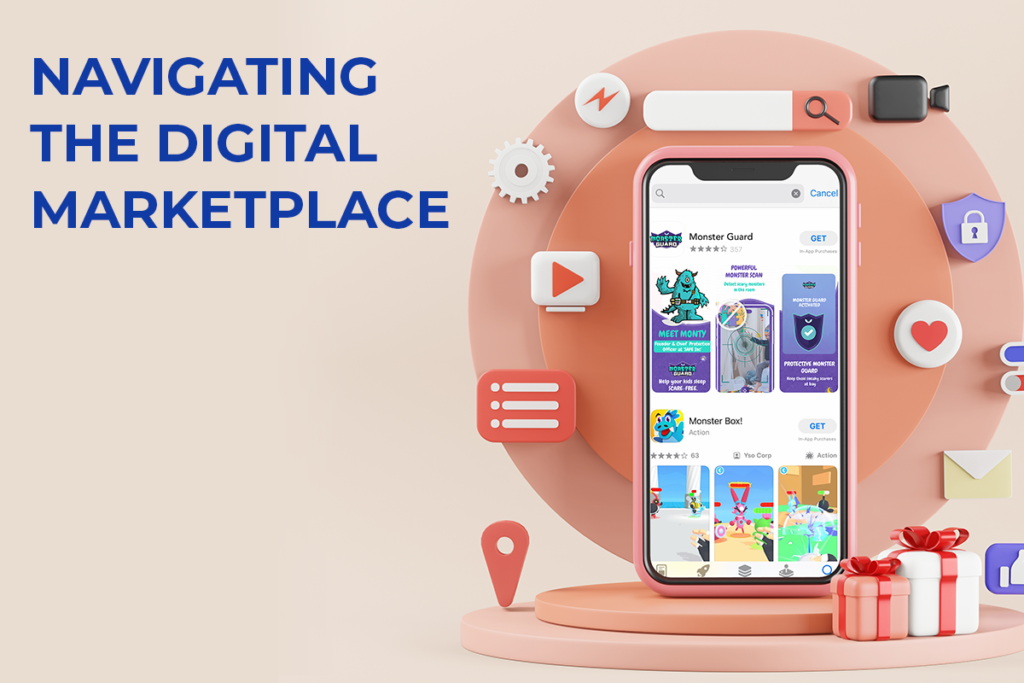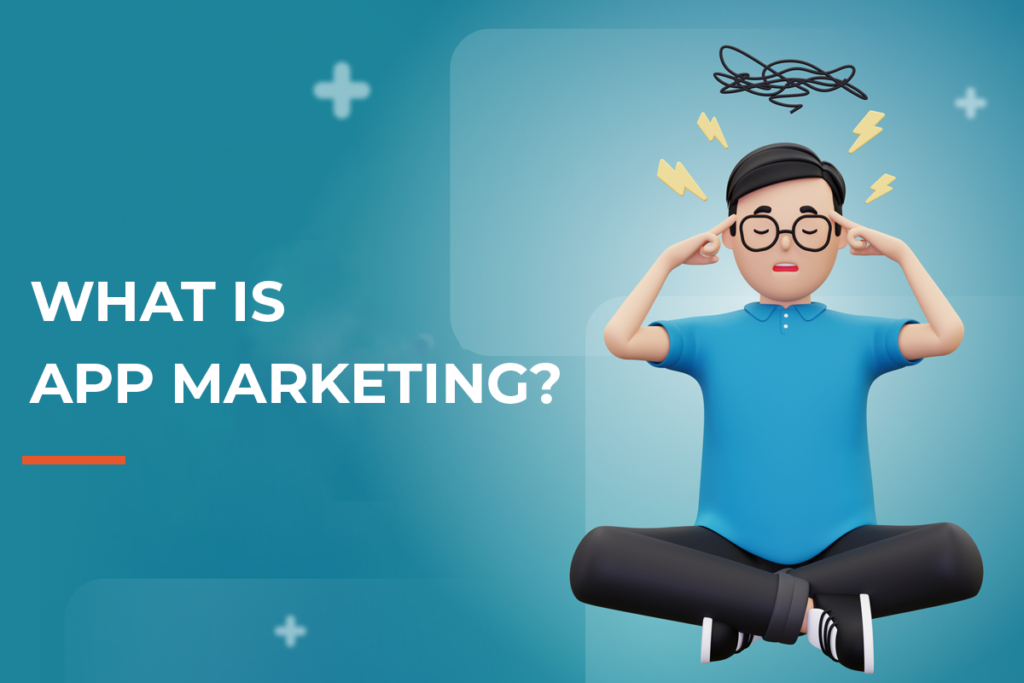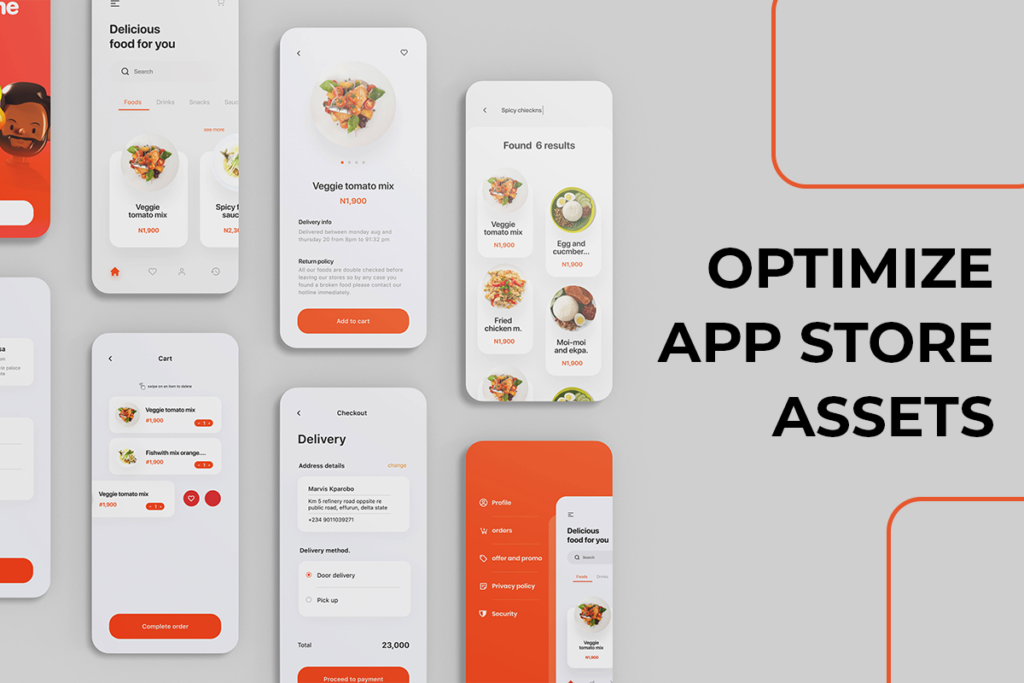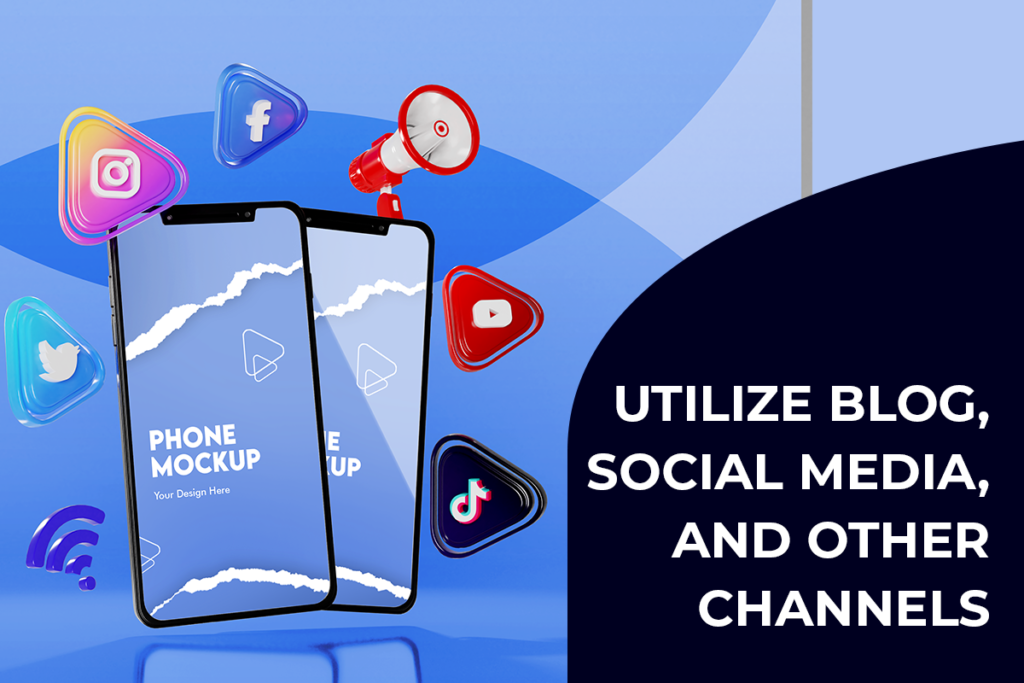
App Marketing Guide for Non-Tech Entrepreneurs
I. Introduction
In an age where the mobile app market is booming, non-tech entrepreneurs may feel out of their depth. Yet, they shouldn’t stand back. The digital landscape is democratizing, and with the right marketing strategies, anyone can propel their app to success. This guide has been created to demystify the process and provide a roadmap for successful app marketing. Whether you’re an entrepreneur with a groundbreaking app idea or a business owner looking to expand into the mobile domain, this guide serves as your compass.
Our goal is to navigate through the essentials of mobile app marketing, ensuring you have the knowledge to effectively promote your app. We’ll cover:
- The core goals of app marketing that are crucial for growth.
- The identification of your ideal customer and the articulation of your app’s value proposition.
- Strategies for optimizing your presence in app stores.
- Tips for leveraging blogs, social media, and other channels for promotion.
- The importance of measuring results and refining your approach for continuous improvement.
By the end of this guide, you’ll have a comprehensive understanding of what it takes to market a mobile app successfully, regardless of your technical background. Armed with this knowledge, you can confidently step into the mobile app arena and compete with the best. Let’s delve into the world of app marketing and unlock the potential of your mobile application.
II. What Is App Marketing?

In the dynamic ecosystem of mobile apps, app marketing stands as a crucial component for success. It’s not just about creating a mobile app; it’s about making it visible, interactive, and continuously engaging for users. The goals of app marketing are multifaceted:
- Increase App Downloads: A fundamental objective is to boost the number of app installs.
- Enhance User Engagement: Keeping users returning to your app is essential.
- Strengthen Brand Presence: A well-marketed app contributes to overall brand awareness.
- Monetization: Well-marketed apps often see increased revenue opportunities.
The tapestry of app marketing is woven with various key themes and tactics that should be part of any robust strategy:
- App Store Optimization (ASO): This is akin to SEO but for the app world. Importance lies in optimizing an app’s metadata and on-page content to rank higher in app store searches.
- Pay-Per-Click (PPC) Install Campaigns: These are ads that you pay for each time a potential user clicks on them, potentially leading them to install your app.
- Push Notifications: Utilized to keep users engaged by sending them timely, relevant content directly to their devices.
- Social Media Advertising: A powerful tool to target specific user groups and drive app installations.
Statistically speaking, tactics like ASO can lead to a considerable jump in app visibility. To put things into perspective, a well-optimized app can see a download increase by 100% to 300% if properly ranked in an app store search.
Additionally, applying PPC campaigns, according to a survey by TechCrunch, nearly 50% of users discover apps through paid ads. This underscores the potential reach and impact these campaigns can have.
Social media channels and push notifications also open avenues for profound engagement. Reports suggest that personalized push notifications can boost open rates by over 800%, which suggests how app marketing can convert into tangible user interaction.
Transitioning into the tactical execution, let’s delve deeper into how to make these strategies work for non-tech entrepreneurs. It’s all about understanding the crux of why people download and interact with mobile apps. This understanding will illuminate how entrepreneurs should market their mobile app. By comprehensively implementing these methods and being aware of the impact, entrepreneurs can navigate the app landscape more effectively. The subsequent steps in this guide will introduce you to how to embark on this journey, beginning with identifying your ideal customer and value proposition.
III. Determine Your Ideal Customer and Value Proposition

Understanding your audience is the cornerstone of any successful marketing strategy, especially in the mobile app arena. You might wonder why. It’s because a well-defined target customer forms the basis upon which you will build your app’s value proposition. Here’s how to pinpoint who your ideal customer is:
- Analyze Customer Needs: Start by identifying the problems your app solves. Who faces these challenges most often?
- Demographic Data: Gather data on age, gender, location, and occupation. These details can shape app features and marketing messages.
- User Motivators: What drives your users? Is it productivity, entertainment, or social connection? Knowing this can guide your app’s development and promotion.
Once you’ve got a handle on your customer’s profile, it’s time to craft your value proposition. This is a clear statement that explains how your app benefits users and why it’s better than the competition. Here’s what to consider:
- Benefits Over Features: Emphasize how your app improves the user’s life, not just its features.
- Clarity is Key: Your value proposition should be easy to understand at a glance. No jargon!
- Unique Selling Points (USPs): Highlight what sets your app apart. Do you offer an unparalleled user experience? Perhaps your app uses cutting-edge technology?
Statistics can significantly bolster the credibility of your value proposition. For instance, if your app helps users save time, quantify it. Mention that “Users report saving an average of 3 hours per week,” which provides tangible evidence of your app’s worth.
Transitioning from identifying your ideal customer to crafting your app’s value proposition is a crucial step. By aligning your app’s benefits with the needs and motivations of your target audience, you create a compelling reason for them to download and engage with your app. Remember, the goal is to resonate with your audience, turning them from casual browsers into loyal users.
IV. Optimize App Store Assets

Your app store presence is often the first encounter potential users have with your app. It’s critical to make a strong impression right off the bat.
Importance of App Name and Description:
- Choose a name that’s catchy, but also descriptive. Users should get a sense of what the app does just from its name.
- Your description should follow suit. It should be concise yet informative, outlining key features and benefits without overwhelming the reader.
Additionally, the right keywords in your app name and description can boost your app’s searchability. This leads to better visibility and more downloads. Use relevant keywords that your ideal customers likely use to find apps like yours.
The Role of Visual Assets:
- Screenshots and video are not just illustrations; they’re storytelling tools. Select images that showcase your app’s most compelling features.
- A preview video can be a game-changer. It gives potential users a taste of the user interface and functionality and can quickly communicate your app’s value.
Your visuals should be high-quality and updated regularly to reflect new updates or features. They are crucial in convincing users that your app is worth their time and device space.
Navigating App Rankings:
- App rankings influence how discoverable your app is. The higher your app ranks, the more visible it is.
- Encourage satisfied users to leave reviews and ratings. Positive feedback can propel your app higher in rankings.
Responding to reviews, both positive and negative, shows that you value user feedback. This can foster trust and loyalty among users.
By addressing these app store assets effectively, you set the stage for increased discoverability. This can lead to more downloads and active users, which are at the heart of app marketing success. Keep these elements fine-tuned, and you’ll help ensure that your app stands out in a crowded marketplace.
Moving forward, it’s essential not just to rest on your laurels but to engage actively with your audience. This leads us to the next key strategy: Utilizing blog, social media, and other channels to promote your app and grow your user base.
V. Utilize Blog, Social Media, and Other Channels

Transitioning from the foundational steps of identifying your ideal customer and optimizing your app store presence, we now delve into the powerful mediums of content dissemination: blogs, social media, and other influential channels. These platforms are not just vessels for broadcasting your message; they are tools to build your app’s community and engage with users on a deeper level.
Harnessing the Power of Content Marketing
- Create Valuable Content: Begin by crafting blog posts that provide genuine value. Topics should resonate with your audience’s interests and challenges, offering solutions that your app can address.
- Consistency is Key: Regularly update your blog to keep users engaged. This also signals to search engines that your site is active, which can improve search rankings.
- SEO Advantage: Use search engine optimization (SEO) to enhance the visibility of your blog content. Research keywords that your target customers are using and incorporate them strategically into your posts.
Building a Social Media Presence
- Choose the Right Platforms: Not all social media platforms will be relevant to your target audience. Identify where your potential users are most active and focus your efforts there.
- Engage, Don’t Just Broadcast: Use social media to start conversations and encourage interaction. Respond to comments, ask questions, and create polls to foster community engagement.
- Leverage User-Generated Content: Encourage your users to share their own experiences with your app. This not only provides you with content but also serves as authentic endorsements.
Leveraging Other Channels
- Influencer Partnerships: Partner with influencers who align with your app’s niche. Their endorsement can amplify your reach and lend credibility to your app.
- Email Campaigns: Build an email list to keep your users informed about updates, promotions, and helpful content. Personalize these communications to increase user engagement.
- Cross-Promotions: Seek opportunities to collaborate with complementary apps or services. This can help you tap into new user bases and add value for your current users.
By adopting these strategies, you can create a symbiotic ecosystem where your blog, social media, and other channels support each other, driving both app visibility and user engagement. Remember, the goal is not just to reach a wide audience but to connect and resonate with individuals who find genuine value in what your app has to offer. In the next section, we’ll look at how to measure the success of your marketing efforts and fine-tune your strategies for even better results.
VI. Key Metrics to Track

As we delve into the heart of ensuring the success of your mobile app, we arrive at a critical juncture: Measurement and Improvement. To truly advance, one must not only execute with precision but also analyze and adapt with unerring accuracy. In this section, we will explore the touchstones of app marketing analytics and the cycle of feedback and iteration that can foster continuous enhancement of marketing efforts.
Determining what is working in your mobile app marketing strategy is contingent on tracking the right data. Factors to consider include:
- User acquisition sources: Understand from where users discover your app.
- Retention rates: Measure how many users return after their first visit.
- User engagement: Track the frequency and duration of user interactions.
- Lifetime value (LTV): Assess the revenue a user generates throughout their time using the app.
- Conversion rates: Analyze the percentage of users who perform desired actions.
To effectively track these metrics, leverage analytics tools provided by app stores, or consider third-party analytics platforms that offer deeper insights.
- Feedback and Iteration
Once you have a grasp on the analytics, it’s crucial to refine your strategy:
- Collect User Feedback: Actively seek out feedback through surveys, user reviews, and direct communication.
- A/B Testing: Experiment with different versions of your app’s elements to find the most effective ones.
- Update Regularly: Introduce new features and fix issues to keep the app fresh and improve user satisfaction.
Lastly, be prepared to iterate. Marketing is an ongoing process that demands regular attention and adjustment. Utilize the results from your collected data to inform your decisions moving forward, adapt your strategy to better meet user needs, and continue to evolve with the market. By doing so, you don’t just chase growth; you create a sustainable pathway to it, securing your app’s place in the dynamic mobile app arena.
Conclusion
In conclusion, mastering mobile app marketing is essential for non-tech entrepreneurs aiming to make their mark in the digital world. By setting clear goals, understanding your audience, and articulating your app’s unique value, you lay the groundwork for success. Optimizing your app store presence with a catchy name, engaging description, and visual assets enhances discoverability and entices users to download. Meanwhile, leveraging blogs and social media propels your app into the spotlight, creating a community of engaged users.
Remember, the journey doesn’t end with promotion. Tracking key performance metrics, gathering user feedback, and continuously refining your approach are pivotal to sustaining growth. By staying adaptable, you ensure that your app not only reaches but also resonates with your target audience, securing its longevity in the competitive app marketplace. Armed with these insights, you are now equipped to navigate the app marketing landscape, transforming your mobile app from a hidden gem into a shining beacon of success.
Please feel free to Contact Us in case you need any guidance regarding your app marketing needs.
FAQ
What is mobile app marketing and why is it important?
Mobile app marketing is the process of creating marketing strategies to reach your target audience, encourage them to download and use your app, and maintain their engagement over time. It’s crucial because the mobile app market is highly competitive, with millions of apps vying for attention. Effective marketing can lead to increased visibility, more downloads, and higher user retention, which are essential for the success and profitability of your app.
Can non-techy founders successfully market a mobile app?
Absolutely! Non-technical founders can market their mobile apps successfully by understanding the basics of app marketing, defining their target audience, and using the right tools and strategies. By following the guides and principles laid out in articles like these, even those without a technical background can craft compelling marketing campaigns and drive app growth.
What are the core goals of app marketing?
The core goals of app marketing include increasing app downloads, enhancing user engagement, strengthening brand presence, and monetizing the app effectively. Achieving these goals helps ensure that your app stands out in the marketplace and provides value to both users and the business.
How do I identify my ideal customer for my app?
To identify your ideal customer, analyze the problems your app solves and who faces these problems, collect demographic data, and understand what motivates your users, whether it’s productivity, entertainment, or something else. This information helps you tailor your marketing efforts and app’s features to meet the needs of your target audience.
What is a value proposition and how do I develop one for my app?
A value proposition is a statement that clearly explains the benefits of your app and why it’s superior to competing apps. To develop a strong value proposition, focus on the benefits your app offers rather than just its features, ensure clarity and simplicity, and highlight your unique selling points. Use statistics and user testimonials to support your claims.
What is App Store Optimization (ASO) and why is it important?
App Store Optimization (ASO) is the process of optimizing your mobile app’s metadata, such as its title, keywords, and description, to rank higher in app store search results. ASO is important because it increases your app’s visibility, making it easier for potential users to find and download it.
How can I utilize social media to promote my mobile app?
To promote your app on social media, choose the platforms where your target audience is most active, engage with users by starting conversations and encouraging interaction, and leverage user-generated content to showcase real-life experiences with your app. Tailor your content to each platform and measure the performance to refine your strategy.
What are some effective ways to measure the success of my app marketing efforts?
Measure the success of your app marketing by tracking key metrics such as user acquisition sources, retention rates, user engagement, lifetime value (LTV) of a user, and conversion rates. Use analytics tools provided by app stores or third-party platforms to gather this data and adjust your strategy accordingly.
How often should I update my app marketing strategy?
Your app marketing strategy should be an ongoing process that you regularly review and update. Pay attention to changes in user behavior, market trends, and the performance of your marketing tactics. Collect user feedback and use A/B testing to refine your approach. Regular updates ensure that your marketing efforts remain effective and your app stays relevant.
What is the role of user feedback in app marketing?
User feedback is vital in app marketing as it provides insights into what users like and dislike about your app. It can guide you in making improvements, developing new features, and enhancing user experience. Positive feedback can also be used in promotional materials, while addressing negative feedback shows that you value user input and are committed to making your app better.




0